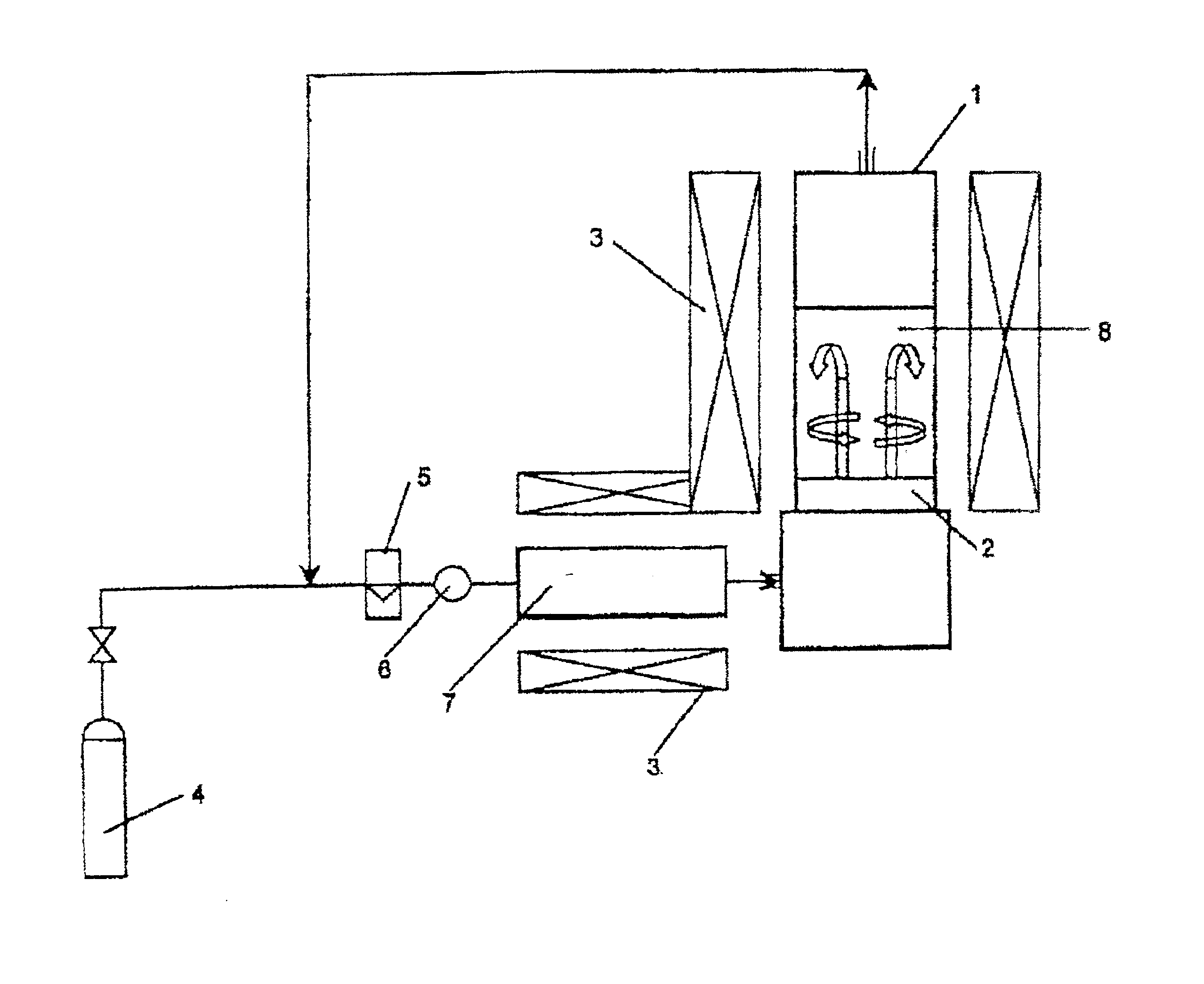Porous silica granule, method for producing the same, and method for producing synthetic quartz glass powder using the porous silica granule
a technology of porous silica granule and porous silica sand, which is applied in the direction of silicon oxides, manufacturing tools, silicon compounds, etc., can solve the problems of insufficient purity of synthetic quartz glass, inability to use as a starting material for the semiconductor industry, and the pore diameter of quartz glass using natural quartz glass or silica sand as the raw material is now hitting the highest limit, so as to improve the purity and quality, the effect of increasing the pore diameter
- Summary
- Abstract
- Description
- Claims
- Application Information
AI Technical Summary
Benefits of technology
Problems solved by technology
Method used
Image
Examples
example 2
After the same preparation of the silica granule and the same heat treatment as described for Examplel, an alternative method for calcining was performed.
Calcining
The porous silica granule subjected to heat treatment above was calcined in accordance with the process shown in the flow sheet given in FIG. 2.
In FIG. 2 are shown: a vertical fluidized heating cell 1, a gas dispersion plate 2, a heater 3, a helium gas storage bomb 4, a gas flow meter 5, a gas pressure gauge 6, a gas heating furnace 7, and a powder filled layer 8. The silica granule was fed into the vertical fluidized heating cell 1, and was set inside a vertical electric furnace, and was heated from the outer periphery with a carbon resistance type heater. Gaseous helium was supplied from the lower portion of the vertical type fluidized heating cell at a rate of 30 liters / minute with the initiation of heating, so that the porous silica granule may be subjected to bubbling fluidization. The gaseous helium was heated to 100...
PUM
| Property | Measurement | Unit |
|---|---|---|
| density | aaaaa | aaaaa |
| specific surface area | aaaaa | aaaaa |
| diameter | aaaaa | aaaaa |
Abstract
Description
Claims
Application Information
 Login to View More
Login to View More - R&D
- Intellectual Property
- Life Sciences
- Materials
- Tech Scout
- Unparalleled Data Quality
- Higher Quality Content
- 60% Fewer Hallucinations
Browse by: Latest US Patents, China's latest patents, Technical Efficacy Thesaurus, Application Domain, Technology Topic, Popular Technical Reports.
© 2025 PatSnap. All rights reserved.Legal|Privacy policy|Modern Slavery Act Transparency Statement|Sitemap|About US| Contact US: help@patsnap.com


